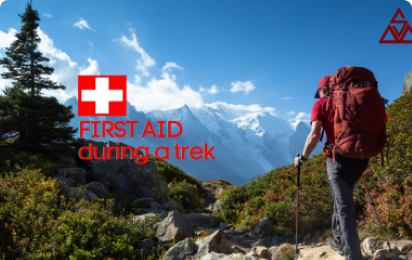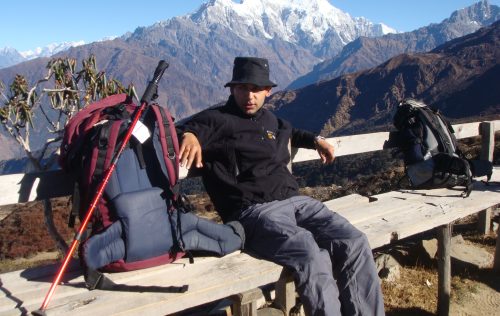First Aid Essentials
First aid involves the steps taken to help an injured or sick person in the first minutes after an illness or injury. Accidents or illnesses can happen to anyone at any time, whether at home, work, or school. Often, first aid can help someone feel better, recover more quickly, and even save lives. First aid can be useful in many situations, from sprains to electric shocks to heart attacks. Below is a list of medicines and other items to be carried during tours, trips, and treks.
Medicines:
- Antacid medicine
- Regular prescription medicines: Travellers should take enough for the planned trip plus extra in case the return is delayed. Carry all medicines in their original containers with clear labels identifying your name and dosing schedule. If you have a chronic condition like diabetes, seizures, or allergies, consider wearing a medical alert bracelet.
- Acetaminophen, ibuprofen, or aspirin for headaches, pain, fever, and simple sprains or strains
- Antihistamines for allergies
- Antinausea or motion sickness medicine
- Acetazolamide for altitude sickness
- Over-the-counter medicine for diarrhoea
- Cough and cold medicines
Equipment:
- Bandage closures (e.g., butterfly bandages) to tape edges of minor cuts together
- Triangular bandage to wrap injuries and make an arm sling
- Elastic wraps for wrist, ankle, knee, and elbow injuries
- Bandages of assorted sizes for minor cuts and scrapes
- Safety pins to fasten splints and bandages
- Gauze in rolls, as well as 2-inch and 4-inch pads for larger cuts and scrapes
- Adhesive tape to keep gauze in place
- Disposable, instant-activating cold packs for injuries and burns, as well as for strains and sprains
- Disposable rubber gloves to protect hands and reduce the risk of infection when treating wounds
- Thermometer to take temperatures in case of illness
- Oximeter to check the oxygen level in the blood
Equipment (May not be allowed in your carry-on bag if travelling by air):
- Scissors with rounded tips to cut tape, gauze, or clothes if necessary
- Tweezers to remove small splinters, foreign objects, bee stingers, and ticks from the skin
Lotion/Cream/Wipes:
- Antibacterial hand wipes or an alcohol-based hand cleaner (should contain 60% alcohol or more)
- Antiseptic wipes to disinfect wounds or clean hands, tweezers, scissors, or other utensils
- Antibiotic ointment to prevent infection in cuts, scrapes, and burns
- Hydrogen peroxide to clean and disinfect wounds
- Aloe gel for sunburns
- Insect repellent (appropriate for use on children should contain no more than 10% to 15% DEET, and 30% to 50% DEET or up to 15% picaridin for adults, as the chemical can cause harm when absorbed through the skin. Do not use insect repellent on infants 2 months of age or younger.)
- Calamine lotion to relieve itching and irritation from insect bites and poison ivy
- Hydrocortisone cream to relieve irritation from rashes
- Sunscreen with SPF 15 or higher
Miscellaneous:
- Latex condoms
- Water purification tablets
- Extra pair of contact lenses or prescription glasses
- List of prescription medicines and generic names
The first aid container should be made of lightweight fabrics with a space-saving design, making it ideal for activities requiring minimal gear. The items should be stored in waterproof component bags, where everything is clearly visible and easy to access, helping to survive the toughest conditions.









